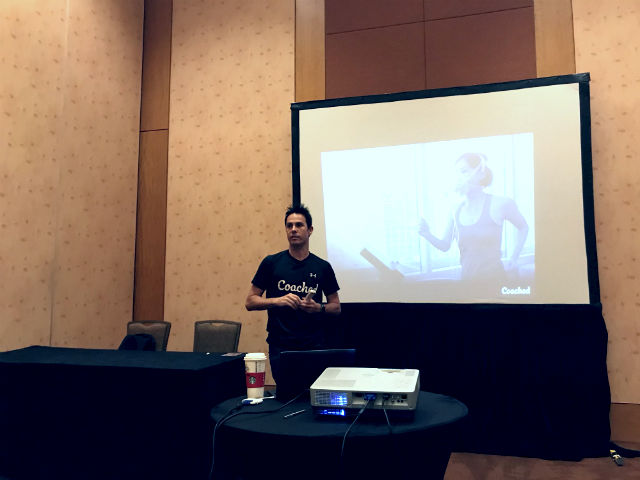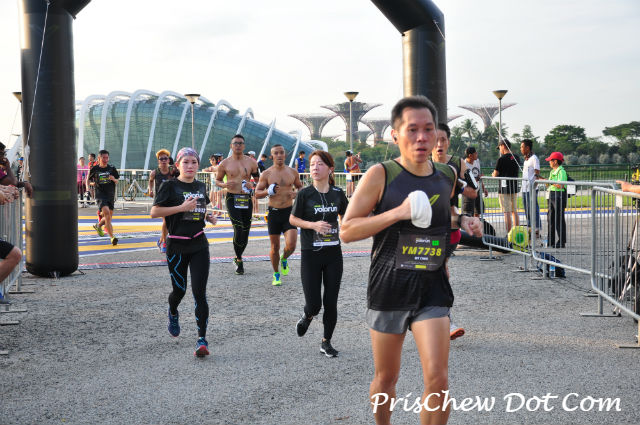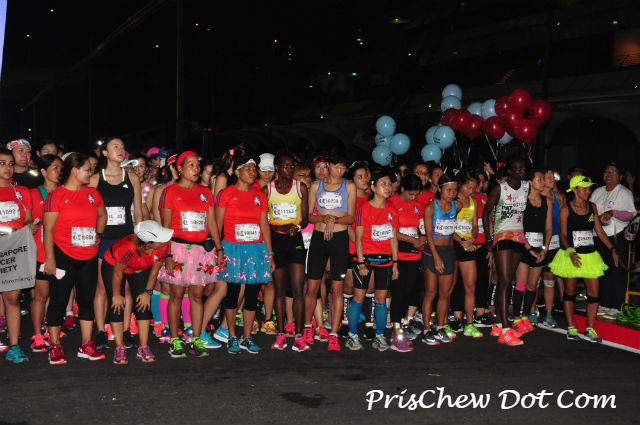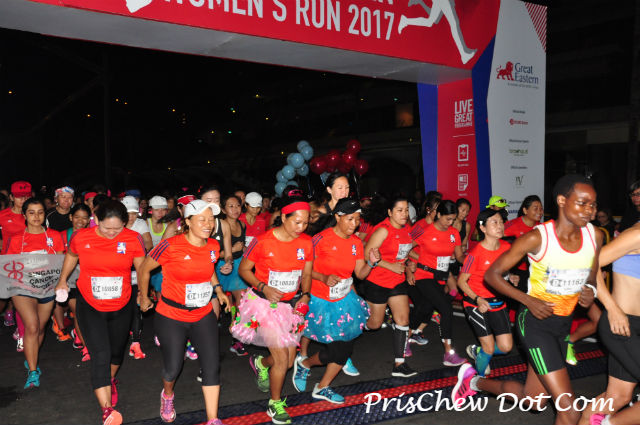With less than two weeks to go now till the Standard Chartered Singapore Marathon (SCSM) on the 3rd of December, Coached’s Ben Pulham shared some quick tips on race execution to help runners out at the last minute – at a talk organised by SCSM recently.
Said Ben, “A lot of runners have a results driven mentality. But instead of focusing on the end point, you should do the small things well, to achieve the best results in terms of your fitness.”

Ben shares SCSM race execution tips.
He added, “Having outcome goals lead us to take shortcuts to achieve them. But there are some thing outside of ourselves that influence our results. For example if your goal is a sub 4hr marathon and you run 4hr 1min because the weather was hot, then you will be disappointed. Framing success strictly on an outcome can lead you to feel disappointed about the result.”
Think about the process, not the results
Instead Ben urges runners to think out the process. He said, “It frees you up to enjoy the journey. Sure you want results, but thinking about the process instead takes the mental pressure off, and your results tend to be better that way, too.”
While there is nothing that Ben can do at this late stage to help runners’ fitness levels, he can help them out in terms of their race execution, to get the best possible result with their current fitness levels.
Racing is about good execution and not fitness
Said Ben, “Racing is all about execution and not fitness. We cannot change our fitness level on race day but we can maximise it. There are some things that we can control but others that we cannot control, in order to maximise our fitness level and run to the best of our ability. So control what is within your power.”

Racing is all about good execution.
He added, “For example, we cannot control the weather but we can inference the runners round us, for example, asking the slower runners to move if they are blocking our path in front of us. Know what you can and cannot control and do your best to manage those, and you will get the best result that you are capable of achieving.”
Ben then pointed out that even though we cannot control the weather, there is a possibility that it can rain on race day. He said, “It is good to plan for these; as it may rain on race day, you should go out and run in the rain so that if it rains at the race, you will already be conditioned for it. You want to be familiar with any type of situation, in order to maximise your performance during the race.”
Factors in order to execute a race well
And then with that, Ben then brought runners through the factors that will help runners to execute a race well. These are as follows.
Equipment
Ben stressed that the race equipment on the day of the race, that is, our running gear, shoes, hydration belt and so on, should be the same as what we have become familiar with during training.
Said Ben, We obviously have control over our race equipment but runners tend to make silly decisions. For example they wear the new race singlet. When you wear something new, you put yourself at risk of destroying your race. There is a chance that you will end up with chaffing or bleeding nipples and this will affect your ability to run, as you will focus your thoughts on the pain and not your running. This will negatively impact your ability to run to your potential.”
He also pointed out that runners also do not train with a race belt but they wear one on the race day and this too, may lead to chaffing.
Continued Ben, “So when it comes to gear, you must wear the gear that you always use in training. If you do have specific race gear, that is fine, but do certain key sessions and smaller races in them, to break into them so that it does not cause you harm during your key race.”
Mindset

The best athletes at a race are usually the mentally toughest ones.
As well, our mindset is also another factor that runners can control.
Said Ben, “The best athletes in the world are the mentally toughest ones. The top athletes can push themselves further than any other guys because they are able to maintain a positive state of mind when they are racing. Shit always happens in races and things can go bad but you need to be resilient and flexible and not let these things worry you.”
To cope with pain, Ben suggested that runners can focus on another part of the body that is not in pain. For example if you have a blister on your little toe that is hurting, throw your mind to the top of your body such as your ears, which are not painful.
Said Ben, “It sounds stupid but this was one of the best tools that I learnt to manage pain. It is a useful skill to practise.”
Running Form
In the latter stages of a long race such as the marathon, our running form tends to break down when we are tired. As such this results in runners getting slower and slower as the marathon wears on.
Said Ben, “Runners think they are limited by how fast they are but in actual fact, they need to slow down less. We are limited instead by our ability to maintain a high speed for a long time and not by the speed itself.”
He added, “We cannot change our fitness level on race day but what we can do is to focus on maintaining a good running form and you will slow down less. If you slow down less, then you will run a faster time.”
When we are tired, we slouch and our head tends to drop. This in turn, shortens the hip flexor muscles and your stride becomes smaller and you get slower as a result.
What you should do instead is to make sure at all times, that your chin is parallel to the ground and that the head is stacked above the hips. Then lean forward from the ankle. This is how to maintain your stride length, according to Ben.
Also when you are tired and you feel that your legs can go no faster, Ben suggested that you try and swing your arms fast. He said, “This will put your heart rate up for sure, but it will also force your legs to keep on going. It sets you up to run to your potential as a result.”
Effort and Pacing

If you run fast straight out of the blocks, can you maintain the pace in the second half of the race?
According to Ben, a well executed race is when you can run the second half at a faster pace than the first half.
He said, “I call it effort but many runners call it pacing strategy. If you can run a faster second half, you know that you have run a well executed race. Many runners have been training hard for weeks and months and then they go into a taper period. So the legs will feel fresher on race day.”
Added Ben, “With the adrenaline pumping, you will feel excited and with so many thousands of other runners who don’t know what they are doing, they run way too fast and this sends you false signals that you think you are slow. But let them go – they are either better than you, or you will see them at the halfway point blown to pieces and that is when you should be just starting to race.”
Ben also pointed out that when the sun comes out at the SCSM, this will fatigue runners even further and causes them to crash and burn as well.
Runners who start a race very fast and slow down in the later stages, Ben pointed out, is called a positive split strategy and is generally done either intentionally or unintentionally by more than 90 per cent of marathon runners.
As well runners may also unwittingly do positive splits when they think they can run a certain pace, but find that they cannot. Ben pointed out that this is confusing their ability with their ambition and that they think they are capable of more than they actually are.
Ben also pointed out that if you find that your legs are so cramped and you cannot move anymore midway during the race, then it is a sign that you have surely started out too fast. He said, “Walking the run at the beginning and then once you get far enough, you run the last part of the run – that is still a far better race strategy than running fast and walking the latter stages of the marathon.”
But then on the other hand though, if you start conservatively and build the effort throughout the race, then you will become the guy passing everyone, rather than the guy who has crashed and hit the wall and is being passed by everyone.
Added Ben, “And passing everyone keeps you in that positive state of mind and that in turn, fuels your motivation and keeps you moving to the best of your ability. It also maximises the fitness that you have; you can beat someone not because you are fitter than them but because you have executed the race better than they had.”
Passing everyone and speeding up in the back part of the race, Ben added, is called a negative split strategy and Ben also pointed out that this is how most world records are run.
He added, “We can never run as fast as the pros, but we can choose to execute a race in the same way as them. In fact the first half of the race should feel ridiculously easy, just like a training run.”
The third race strategy is called even splits, and that is running the first and the second halves at the same pace. This according to Ben, is also quite a smart way to race. Pacers often employ this race strategy to hit certain timings.
Nutrition

Do not try anything new in terms of race day nutrition. and hydration.
According to Ben, when it comes to race nutrition, we should stick to what we are familiar with and not try anything new on race day.
Said Ben, “Runners may train with a certain gel or sports drink and then when the race day comes, they take the gel or drink available at the race and end up bloated and with stomach problems.”
Ben also added that runners tend to be quite lazy when it comes to eating breakfast before the race; but he recommends eating three hours before the flag off time, as this is a good time for the food to fully digest before the race.
Said Ben, “I would get up and eat and then go back to sleep, then I would get ready to go.”
Ben also suggested that because the body loses calories at a faster rate than it can consume on race day, he recommended runners to take in calories from the beginning, sipping isotonic drink and from the very first hydration station onwards and taking in gels early in the race, even though you are not thirsty or hungry at this point.
Said Ben, “I would typically take in sugar from the beginning, that is, from hydration station one or two. I would grab a cup and close it to drink from it so that the drink does not spill out, and I would keep running. I do not slow down.”
He added, “But then, if you are a person who is good at fat burning though, your requirement for taking external sugar is not as high as someone who relies on sugar. If you can burn fats too, you can conserve glycogen for the latter stages of the race; this is useful because when the body is under stress, it will not take in calories well.”
Training is also a good time, according to Ben, to experiment on your race strategy and figure out what you can and cannot drink, in order not to feel sick or suffer from stomach upsets, as the last thing that you want is for these issues to plague you on race day.
Said Ben, “The purpose of training is to figure out what works for you. Then on race day, put it all together and show the body how it works. Practise your race day strategy in training, during the last few weeks leading to the marathon.”
He added that it is tempting to take some, when you are being given free gels on race day, but he stressed that there is a high chance that you will get sick by taking these and as a result you are not maximising your fitness levels and running to the best of your ability.
Ben also added that he does not believe in carbo loading, a common practice by endurance athletes where they increase their intake of foods rich in carbohydrates in order to maximise the storage of glycogen in the muscles and liver.
Explained Ben, “If you are a person who eats a standard Singaporean diet, I do not think you will need to carbo load as eating more carbs will switch off your fat burning ability. You want to put your body in a state of metabolic flexibility to use all type of fuel and be able to choose what fuel to use. When the intensity of running goes up, you need to get your fat burning top so that you can run at a high level and still be able to burn most of your energy from fats.”

Leave a Comment